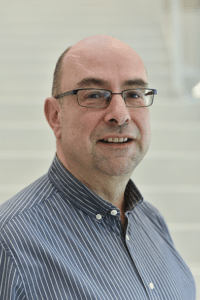PUSH-IT – Piloting Underground Storage of Heat in Geothermal Reservoirs
Project PUSH-IT’s ambition is to overcome the seasonal mismatch between heat demand and heat generation from sustainable sources using underground heat storage. The EU-funded project focusses on three innovative technologies for high-temperature heat storage, as well as enabling technologies, societal engagement, and governance, policies and business models.
The goal is to develop this missing link in heat networks as a safe, reliable, affordable, and economically viable solution that fits existing and future regulatory frameworks. This contributes to reducing greenhouse gas emissions and achieving a net-zero carbon economy and society in Europe by 2050.
Project Objectives
PUSH-IT’s ambition is to overcome the seasonal mismatch between heat demand and heat generation from sustainable sources using underground heat storage. The EU-funded project aims to demonstrate the full-scale application of high temperature heat storage in geothermal reservoirs using three different technologies at six different sites.
PUSH-IT has the following objectives:
- Implement, develop, and test the ability of mine, borehole, and aquifer thermal energy storage technologies to store and recover heat.
- Enable joint decision making of citizens, regulators, and operators to increase social acceptance.
- Develop enabling technologies to adapt thermal energy storage in mines, in boreholes and in aquifers to a wide range of geological conditions.
- Develop an open-source tool to assess and optimise levelized cost of energy (LCOE) reduction and costs of carbon emission reduction.
- Optimise integration in heat systems via co-simulation and machine learning.
Why PUSH-IT?
To reduce global warming, the EU aims to have a net-zero greenhouse gas economy by 2050. At present, heating and cooling represent around half of the final energy demand in Europe. This energy is mainly supplied by fossil fuels. To achieve EU ambitions, is therefore essential to move to low-carbon heating and cooling.
A challenge for decarbonizing heat systems is the size of the seasonal mismatch between demand for heat and heat generation from sustainable sources. In summer, more heat is generated than used; while in winter, heat generation cannot keep up with the high demand.
There are two ways to address this mismatch. One way is to install a large capacity for producing heat, so that peak demands can be met. However, this solution is not cost effective, as most of the installed capacity will not be used.
Another way is to store energy for later use if it is not needed at the time of conversion. Storing large amounts of heat to account for fluctuation in seasonal supply and demand contributes to optimal usage of sustainable heat.
Various technologies have been proposed for large-scale heat storage in geothermal reservoirs and low temperature storage is routinely applied. PUSH-IT focuses on extending storage temperature ranges to high temperatures, up to 90 °C.
At six pilot sites, PUSH-IT will demonstrate three technologies: mine, borehole, and aquifer thermal energy storage (MTES, BTES, and ATES, respectively). These options are fit for a wide variety of geological conditions covering most locations in Europe.
In addition, three cross-cutting challenges will be addressed:
- Social engagement, societal benefits, and risks and regulations.
- Optimal system integration and control.
- Enabling technologies.
